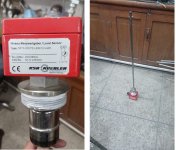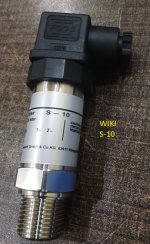Hi,
I am working on automating an industrial fabric shrinkage tester to replace its outdated electronics with a PLC.
To get the tank's water level signal to the PLC, I am considering designing a tube connected to the nozzle at the bottom of the tank. I plan to install a water level probe/sensor in this tube. Could you please suggest which kind of level sensor would be best for this application?
The required specifications are:
I am working on automating an industrial fabric shrinkage tester to replace its outdated electronics with a PLC.
To get the tank's water level signal to the PLC, I am considering designing a tube connected to the nozzle at the bottom of the tank. I plan to install a water level probe/sensor in this tube. Could you please suggest which kind of level sensor would be best for this application?
The required specifications are:
- Range: 1 meter
- Output: 4-20mA







